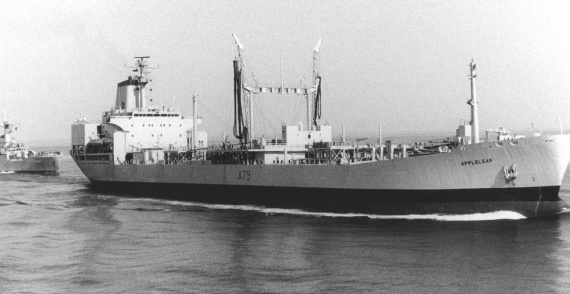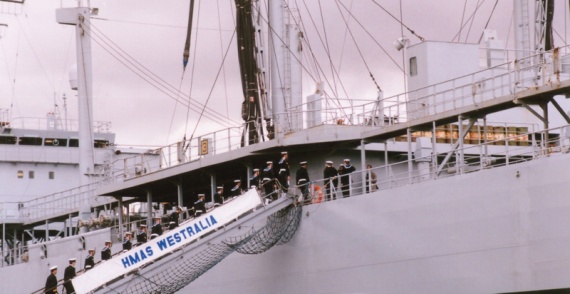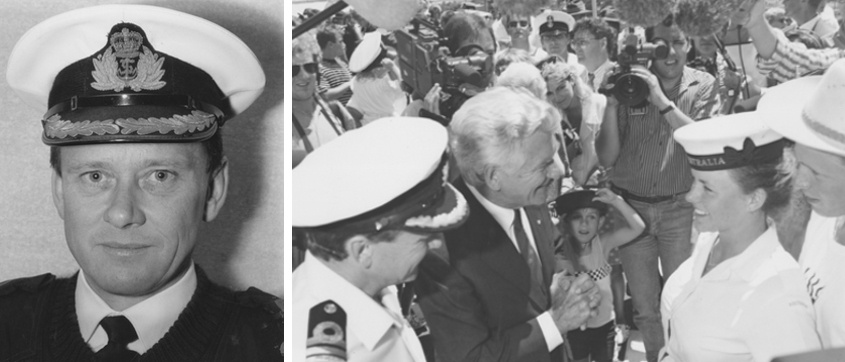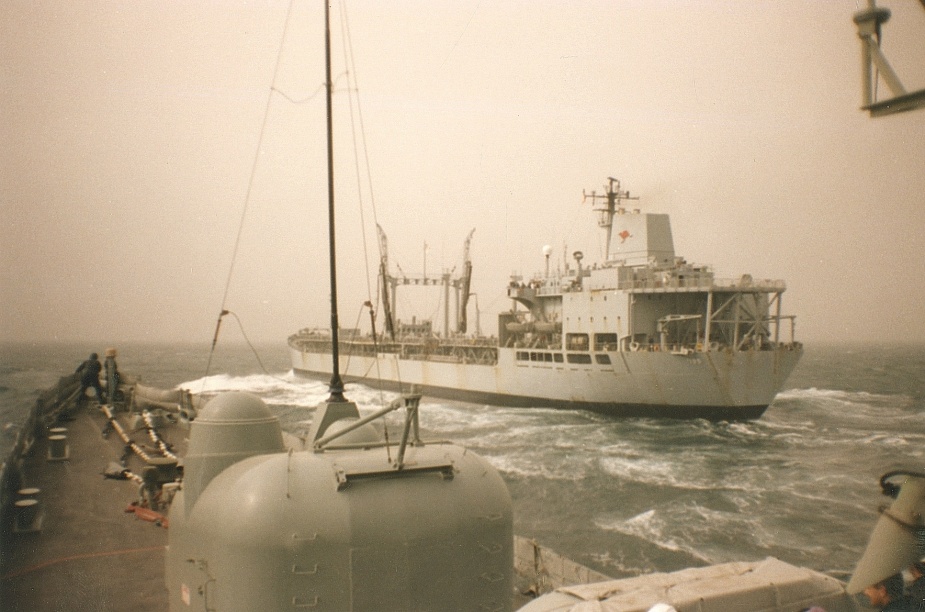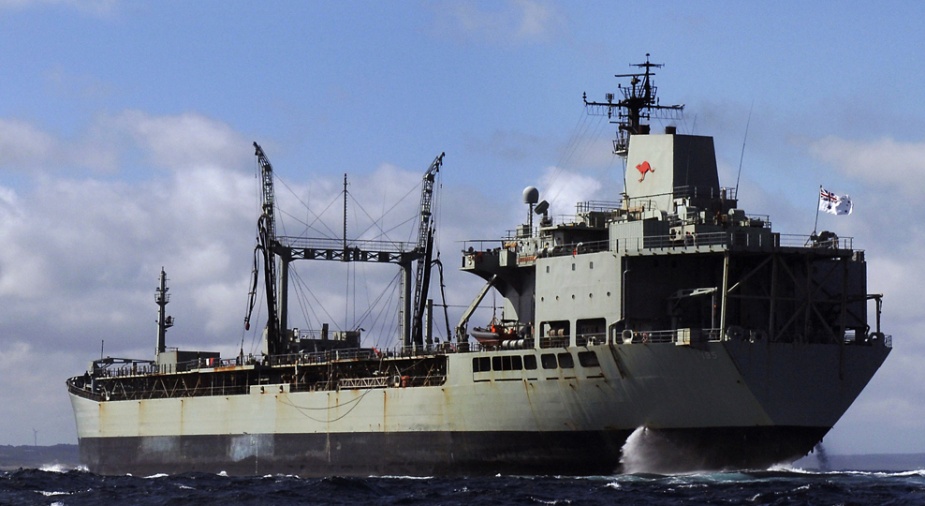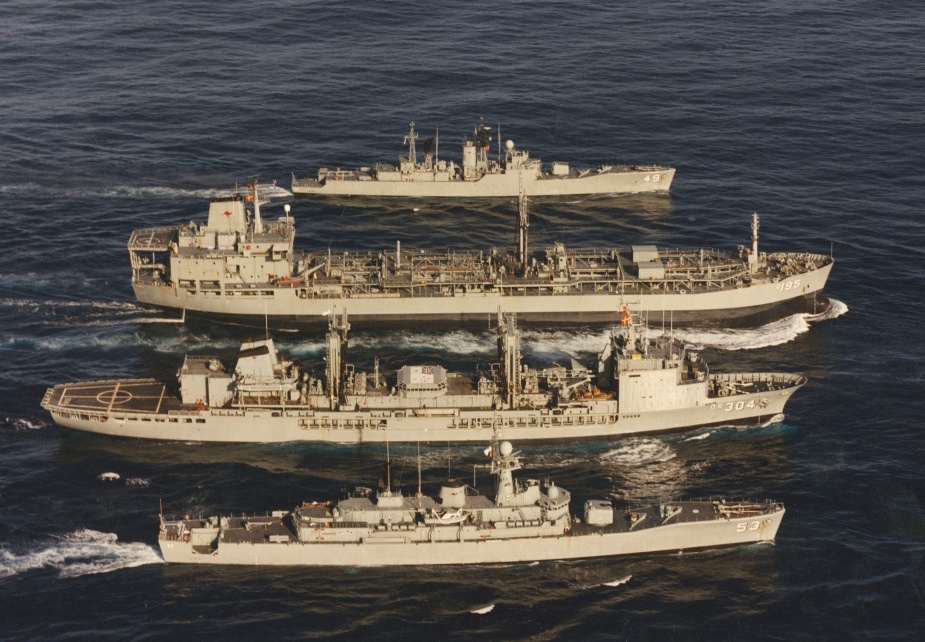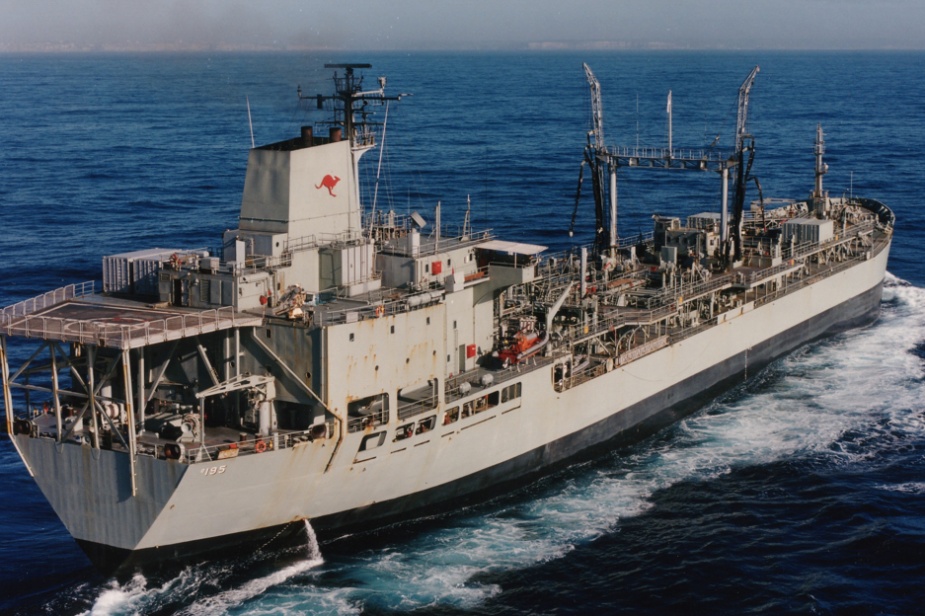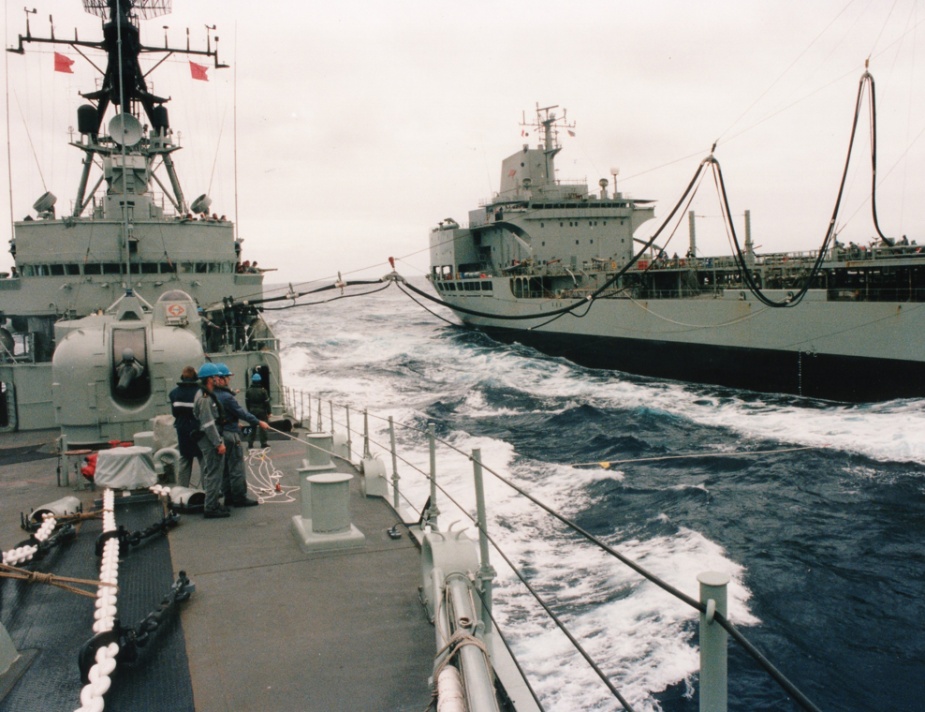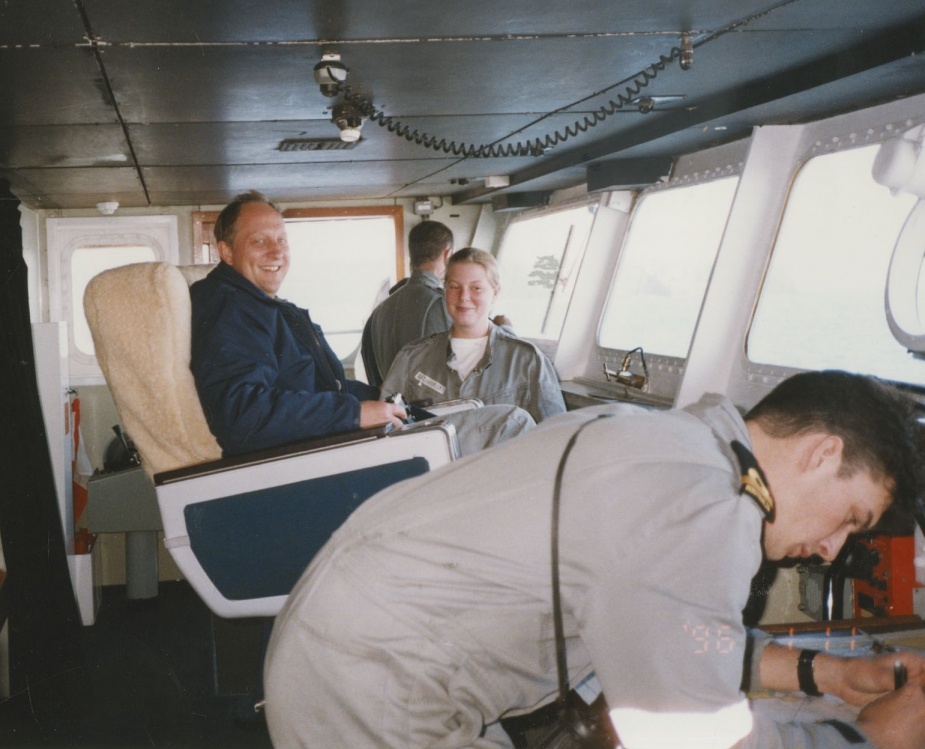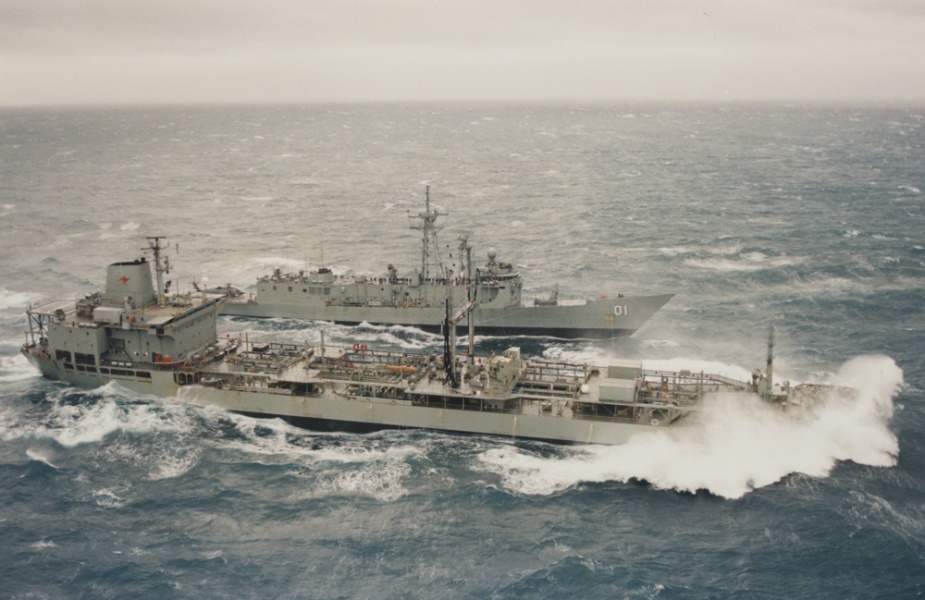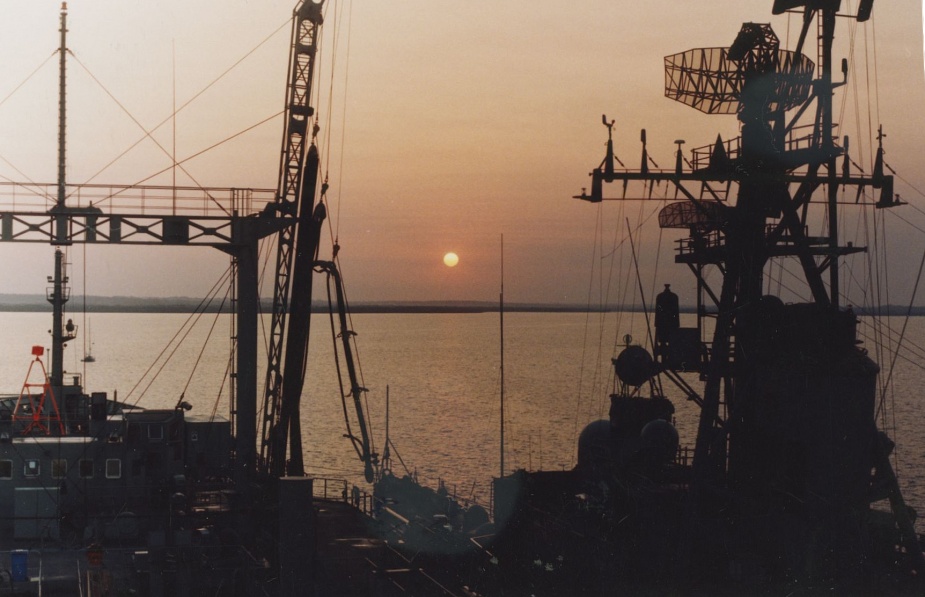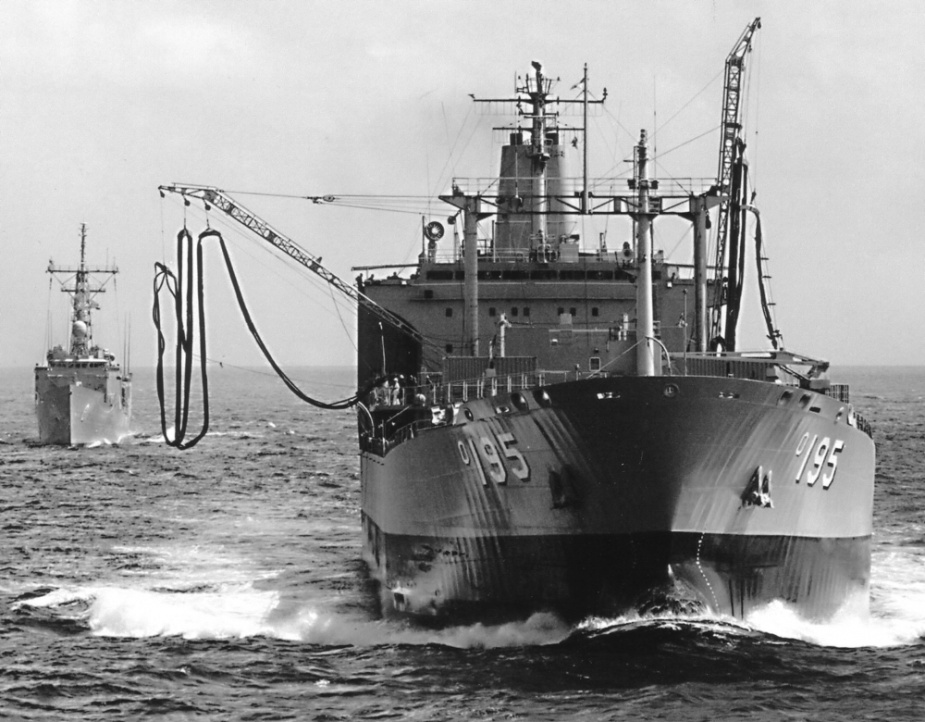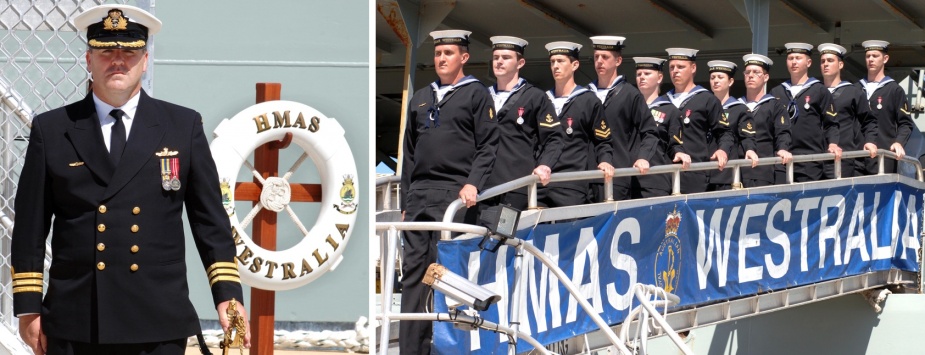HMAS Westralia (II)
| Class |
Stat 32 class tanker |
|---|---|
| Type |
Oil Tanker (Royal Australian Fleet Auxiliary) |
| Pennant |
AO195 |
| International Callsign |
VKCX |
| Builder |
Cammell Laird & Co Ltd, Birkenhead, England |
| Launched |
24 July 1975 |
| Commissioned |
9 October 1989 |
| Decommissioned |
16 September 2006 |
| Fate |
Sold |
| Dimensions & Displacement | |
| Length | 171 metres |
| Beam | 26 metres |
| Draught | 12.03 metres |
| Performance | |
| Speed | 16 knots |
| Complement | |
| Crew | 96 |
| Capacity | 25,000 tonnes of fuel, including several thousand tonnes of aviation fuel |
| Propulsion | |
| Machinery | Two Crossley-Peilstick 14 PC2-2 V400 diesel engines |
| Horsepower | 14000 |
| Armament | |
| Guns | 3 x .50 cal Browning machine guns |
| Helicopters | Equipped with flight deck to conduct helo operations |
| Awards | |
| Inherited Battle Honours | |
| Battle Honours | KUWAIT 1991 |

HMAS Westralia was originally built in 1976 by Cammell Laird Shipbuilders in Birkenhead, United Kingdom, as the Stat 32 Class petroleum products tanker, Hudson Cavalier. In 1979 she was acquired by the Royal Fleet Auxiliary (RFA) for use as a support oiler. Renamed RFA Appleleaf, she was modified for underway replenishment. Appleleaf deployed to the South Atlantic Ocean from 2 April to 14 June 1982 for active service in the Falklands War.
The Australian Government leased Appleleaf in 1989 for five years with the provision to purchase the vessel outright at the end of the lease term. On 9 October 1989, after completion of a refit at Humber Ship Repairers, England, she was commissioned as HMAS Westralia, under the command of Commander JS Moore, RAN.
Westralia arrived in Australian waters on 19 December 1989 and, on that day, HMAS Derwent became the first ship to conduct a Replenishment at Sea (RAS) with Westralia. The Army’s Special Air Service Regiment utilised Westralia as a training platform during Exercise ANCHOR CHAIN in January 1990 before the ship began preparations for her first Royal Australian Navy (RAN) deployment. An official renaming ceremony took place at HMAS Stirling on 12 March 1990, where the ship was officially renamed HMAS Westralia by Mrs Delys Gration, wife of the Chief of the Defence Force, General Peter Gration, AC, OBE.
Westralia departed Fleet Base West on 15 March 1990 for her first overseas deployment during which she visited Singapore, Hong Kong, Sattahip, Kelang, Penang, Kuantan and Jakarta, and conducted exercises with Australian, British, French, New Zealand, Malaysian and Singaporean ships. From 16 to 21 May, she participated in the Royal Malaysian Navy’s 55th Anniversary celebrations and International Royal Fleet Review, following which she also participated in the Five Power Defence Agreement Exercise PASSEX 90-1. From 22 June to 10 October she underwent a refit at Keppel Dockyard in Singapore before returning to HMAS Stirling on 23 October 1990 following a seven month deployment.


